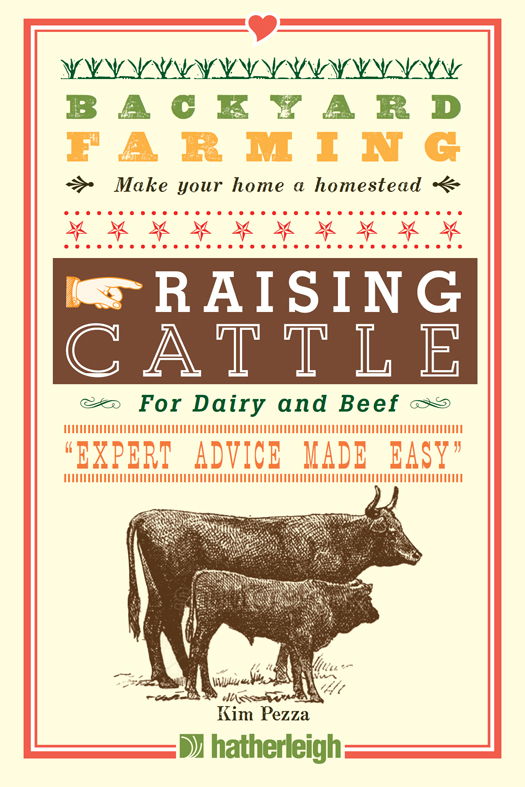Kim Pezza - Backyard Farming: Raising Cattle for Dairy and Beef
Here you can read online Kim Pezza - Backyard Farming: Raising Cattle for Dairy and Beef full text of the book (entire story) in english for free. Download pdf and epub, get meaning, cover and reviews about this ebook. year: 2014, publisher: Hatherleigh Press, genre: Home and family. Description of the work, (preface) as well as reviews are available. Best literature library LitArk.com created for fans of good reading and offers a wide selection of genres:
Romance novel
Science fiction
Adventure
Detective
Science
History
Home and family
Prose
Art
Politics
Computer
Non-fiction
Religion
Business
Children
Humor
Choose a favorite category and find really read worthwhile books. Enjoy immersion in the world of imagination, feel the emotions of the characters or learn something new for yourself, make an fascinating discovery.

- Book:Backyard Farming: Raising Cattle for Dairy and Beef
- Author:
- Publisher:Hatherleigh Press
- Genre:
- Year:2014
- Rating:5 / 5
- Favourites:Add to favourites
- Your mark:
Backyard Farming: Raising Cattle for Dairy and Beef: summary, description and annotation
We offer to read an annotation, description, summary or preface (depends on what the author of the book "Backyard Farming: Raising Cattle for Dairy and Beef" wrote himself). If you haven't found the necessary information about the book — write in the comments, we will try to find it.
Whether for milk or beef, cattle are among the most versatile livestock for your new homestead.
Backyard Farming: Raising Cattle is your expert guide to successfully keeping and caring for your herd.
A comprehensive primer for first-time beef and dairy cow owners, Raising Cattle includes detailed illustrations and informative photographs that help introduce these animals to your backyard farm, whether you plan to raise a single cow or bull, or an entire herd.
Raising Cattle covers a broad range of ownership and care issues from selecting the right breeds and numbers for your wants and needs, housing and land requirements, breeding and raising new calves, and keeping your animals happy and healthy, to enjoying your very own farm-fresh milk, beef, and more.
With Raising Cattle, you will:
Learn to understand and appreciate these essential livestock investments
Build efficient housing for your cows to minimize your workload
Prepare and care for this unique herd animal, opening up new possibilities for your backyard farm
Learn to milk your dairy cows and prepare it for sale or personal use
Discover a variety of delicious homestead recipes
and many more tips and tricks from experienced farmers to help you achieve success with your cattle.
Raising Cattle is your first big step to joining the growing movement of homemakers and homesteaders looking to make a return to a healthier, happier way of lifeand it starts right in your own backyard.
Backyard Farming is a series of easy-to-use guides to help urban, suburban, and rural dwellers turn their homes into homesteads. Whether planning to grow food for the family or for sale at the local farmers market, Backyard Farming provides simple instruction and essential information in a convenient reference.
Kim Pezza: author's other books
Who wrote Backyard Farming: Raising Cattle for Dairy and Beef? Find out the surname, the name of the author of the book and a list of all author's works by series.


















